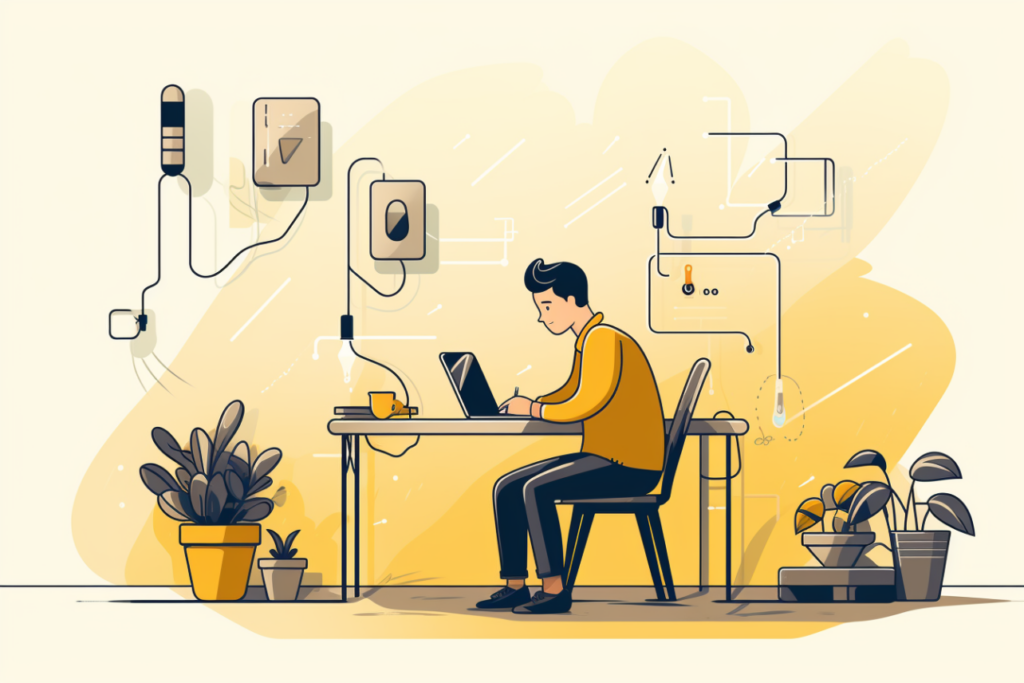Wiring an outlet can be daunting for beginners, but with the right tools, knowledge, and safety measures, it can be a relatively simple project. Whether you want to replace an existing outlet or install a new one, this step-by-step guide will walk you through the process.
Before you begin, it’s important to understand the basic components of an electrical outlet. A typical outlet consists of three connections: hot, neutral, and ground. The hot wire (usually black) carries the electrical current from the circuit breaker to the outlet. The neutral wire (usually white) completes the circuit and returns the current to the power source. The ground wire (usually green or bare copper) provides a safe path for electrical faults and protects you from electrical shock.
Now, let’s move on to the tools you’ll need. Having the right tools to ensure a successful and safe installation is crucial. You’ll need a voltage tester, wire stripper, wire cutter, screwdriver, electrical tape, wire connectors, and an electrical outlet.
Before you begin, always turn off the power to the circuit you’ll be working on at the main electrical panel. To be certain, use a voltage tester to ensure no power is flowing to the outlet. Safety should always be your top priority when working with electricity.
How To Wire An Outlet

Wiring an outlet can seem daunting, but with a few simple steps, you can be a master in no time!
Step 1: Prepare the outlet box
First, ensure the power is turned off at the main electrical panel. Remove the cover plate and unscrew the existing outlet from the outlet box. Then carefully pull the outlet out of the box, but be cautious not to damage any wires.
Step 2: Identify the wires
Identify the hot, neutral, and ground wires. The hot wire will be connected to a brass-colored screw, the neutral wire to the silver-colored screw, and the ground wire to the green-colored screw or the grounding terminal on the outlet.
If you have any questions or need clarification, look up a wiring diagram to fully understand which wires are which. There are also a handful of great videos on YouTube that will walk you through the process if a video is easier to follow.
Step 3: Strip the wires
Remove about 1/2 inch of insulation, using a wire stripper, from the ends of the wires. This will expose the bare copper wire, allowing for proper connections.
Step 4: Install the outlet
Insert the wires into the outlet box, ensuring the ground wire is connected to the grounding terminal on the outlet. Wrap the clockwise around each wire and tighten the screws.
Step 5: Secure the outlet
Gently push the outlet into the outlet box, ensuring the wires are not pinched or damaged. Align the screw holes on the outlet with those on the outlet box and screw it in securely using a screwdriver.
Step 6: Test the outlet
Once the outlet is securely installed, turn the power back on at the main electrical panel. Use a voltage tester to check if the outlet is functioning properly. The tester should indicate a live circuit.
Step 7: Reattach the cover plate
Finally, reattach the cover plate to the outlet box using the screws provided. Make sure it is appropriately aligned and tightened securely.
Congratulations! You have successfully wired an outlet.
It’s important to note that if you need clarification on any step or if you encounter any issues, it’s always best to consult a licensed electrician. Wiring can be complex, and mistakes can lead to serious electrical hazards.
Here are a few additional tips and safety reminders:
- Never work on live circuits. Always turn off the power at the main electrical panel before starting any wiring project.
- Be cautious of electrical wires and never touch them with bare hands.
- Follow applicable electrical codes and regulations in your area.
- If in doubt, seek professional help.
Wiring Outlets FAQs
Wiring an electrical outlet is a common task for electricians, but homeowners often have questions about the process, safety, and the tools needed. Here are some frequently asked questions (FAQs) about wiring an outlet:
Is it safe for a non-professional to wire an outlet?
While it’s possible for a homeowner with some knowledge to wire an outlet, consulting or hiring a professional electrician is always recommended, especially if you’re not confident. Mistakes can lead to electrical fires, shocks, or damage to appliances.
What type of outlet should I use?
Standard outlets are typically rated at 15-amp and 125-volt. However, you’ll need a specialized outlet for appliances that require more power, like stoves or dryers. Always check the power requirements of the device you’ll be plugging in.
Do I need a GFCI outlet?
Ground Fault Circuit Interrupter (GFCI) outlets are required in areas where water is prevalent, such as bathrooms, kitchens, and outdoor areas. They help prevent electric shock by quickly shutting off power when a ground fault is detected.
How do I turn off the power to the outlet I’m working on?
Always turn off the power at the circuit breaker or fuse box. It’s a good idea to plug in a lamp or radio to the outlet, so when you turn off the power, you can ensure it’s the right circuit by checking that the lamp or radio goes off.
What’s the difference between the white, black, and green (or bare) wires?
In standard wiring, the black wire is “hot,” the white wire is “neutral,” and the green or bare wire is “ground.” Always connect wires to the appropriate screws or terminals on the outlet.
How do I know if my outlet is grounded?
You can check if an outlet is grounded using a circuit tester or multimeter. If unsure, consult with a professional.
How tight should the wire connections be?
Connections should be snug but not overly tight. Loose connections can cause arcing and potential fire hazards, while overly tightened screws can damage the wire.
Can I wire multiple outlets on the same circuit?
Yes, you can wire multiple outlets in a series (daisy chain) or parallel configuration, but ensure that the circuit’s total load does not exceed its rated capacity.
How can I replace a two-prong outlet with a three-prong outlet?
If your home has older two-prong outlets, it’s advisable to update them. However, simply replacing a two-prong outlet with a three-prong one without ensuring proper grounding can be unsafe. A proper retrofit often requires running a ground wire or installing a GFCI outlet.
What should I do if the outlet feels warm or makes a buzzing sound?
Warmth or unusual noises from an outlet can indicate a problem. It might be due to overloading, a loose connection, or faulty wiring. Stop using the outlet and consult an electrician immediately.
Remember, when dealing with electrical projects, safety is paramount. If in doubt, always consult with or hire an electrician to ensure the job is done correctly and safely.
Wiring an outlet for beginners can be manageable by following these steps and taking necessary safety precautions. Always prioritize safety and remember to consult a professional if you’re unsure about any aspect of the process. Happy wiring!
You might also be interested in: How To Safely Extinguish An Electrical Fire: Expert Techniques




